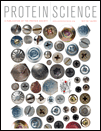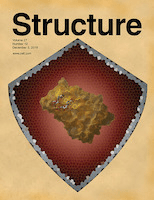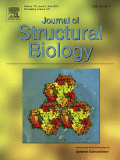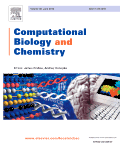
CURRENT OPINION IN STRUCTURAL BIOLOGY
Scope & Guideline
Transforming Perspectives in Molecular Biology.
Introduction
Aims and Scopes
- Structural Dynamics and Functionality:
The journal focuses on the intricate relationship between the structure and function of biomolecules, exploring how conformational changes and dynamic interactions govern biological processes. - Innovations in Imaging and Modeling Techniques:
It highlights advancements in imaging techniques such as cryo-electron microscopy (cryo-EM) and nuclear magnetic resonance (NMR), as well as computational modeling approaches, to elucidate the structures and dynamics of macromolecular complexes. - Protein Interactions and Networks:
Research on protein-protein interactions, including the role of intrinsically disordered regions and allosteric modulation, is a key area, providing insights into cellular signaling and regulatory mechanisms. - Integrative Approaches to Structural Biology:
The journal emphasizes interdisciplinary methodologies that combine experimental data with computational models, enabling comprehensive investigations into the structural dynamics of proteins and nucleic acids. - Biological Applications and Drug Discovery:
There is a consistent focus on the application of structural biology in drug discovery, including structure-based drug design and the development of therapeutic strategies targeting specific biomolecular interactions.
Trending and Emerging
- AI and Machine Learning Applications:
The integration of artificial intelligence and machine learning techniques in structural biology is rapidly expanding, with a focus on protein structure prediction, drug design, and data analysis. - Dynamic and Allosteric Regulation:
Research on allosteric mechanisms and the dynamic nature of proteins is on the rise, emphasizing how conformational changes influence function and interactions within cellular processes. - RNA Structural Biology:
There is a growing interest in the structural biology of RNA, particularly in understanding RNA dynamics, recognition mechanisms, and their roles in various biological processes. - Systems Biology and Integrative Approaches:
Emerging trends include systems biology approaches that integrate structural insights with functional data, facilitating a holistic understanding of biomolecular interactions and cellular networks. - Advancements in Cryo-EM and Hybrid Techniques:
The continuous improvement of cryo-EM methodologies and the combination with other techniques, such as X-ray crystallography and NMR, are leading to more detailed structural insights into complex biological systems.
Declining or Waning
- Classical Crystallography Techniques:
As advancements in cryo-EM and other imaging methods gain prominence, traditional crystallography techniques may be receiving less attention in contemporary research, leading to a decline in related publications. - Static Structural Analysis:
There is a noticeable reduction in the focus on static structural analyses without dynamic considerations, as the field increasingly recognizes the importance of protein dynamics and conformational flexibility. - Limited Exploration of Niche Protein Families:
Research on less prominent protein families or those with limited structural data may be declining as the field prioritizes more widely studied or clinically relevant targets. - Basic Biophysical Studies:
While foundational biophysical studies remain important, there appears to be a shift towards more applied research that directly links structural insights to biological functions and therapeutic applications.
Similar Journals

NATURE STRUCTURAL & MOLECULAR BIOLOGY
Exploring Molecular Mechanisms for Tomorrow's ScienceNATURE STRUCTURAL & MOLECULAR BIOLOGY is a leading journal published by NATURE PORTFOLIO, dedicated to advancing the field of molecular and structural biology since its inception in 1998. With an impressive impact factor that places it in the Q1 quartile across both the Molecular Biology and Structural Biology categories, this journal is pivotal for researchers and professionals seeking to publish innovative and high-impact results. Its Scopus ranking further highlights its elite status, with a remarkable 98th percentile for Structural Biology and 95th for Molecular Biology. While the journal does not currently offer open access, it continues to foster a rich discourse among scientists by providing a platform for the dissemination of groundbreaking research. Located in the United Kingdom and operated from Berlin, the journal's commitment to excellence positions it as an indispensable resource for students, researchers, and practitioners in the realms of biochemistry, genetics, and molecular biology.

PROTEIN SCIENCE
Elevating Knowledge in Protein Science and ApplicationsPROTEIN SCIENCE, published by Wiley, is a premier journal dedicated to the field of biochemistry, molecular biology, and medicine, boasting an impressive impact factor that reflects its influence and importance within the academic community. Established in 1992, the journal has continuously provided a platform for high-quality research, with a current classification in the top quartile (Q1) for its critical contributions to the understanding of protein structure and function, as well as its applications in health and disease. With a Scopus ranking placing it in the 91st percentile among its peers, PROTEIN SCIENCE publishes cutting-edge studies and reviews that are essential for researchers, professionals, and students seeking to advance their knowledge in protein research. Although it does not currently offer open access options, the journal remains dedicated to disseminating vital findings that support the ongoing advancements in molecular biology and biochemistry. Researchers can count on PROTEIN SCIENCE for consistently rigorous peer-reviewed content that fosters meaningful dialog and innovation in the life sciences.

Acta Crystallographica Section F-Structural Biology Communications
Advancing the Frontiers of Structural BiologyActa Crystallographica Section F-Structural Biology Communications, published by the International Union of Crystallography, serves as a crucial platform for researchers in the field of structural biology. Established in 2014, this journal focuses on the dissemination of high-quality research regarding the crystallographic methods and structural analyses of biological macromolecules. Although currently positioned in various category quartiles including Q3 in Biochemistry, Biophysics, and Genetics, and even achieving Q2 in Condensed Matter Physics, the journal continually aims to enhance its influence and reach within the scientific community. The journal is an essential resource for professionals and students alike, providing insights into cutting-edge research and methodologies that can advance our understanding of complex biological systems. Accessibility is facilitated through robust online publishing platforms, although it remains beyond the open access model. Located in the United Kingdom, Acta Crystallographica Section F is dedicated to promoting the integrity of structural biology research and fostering a collaborative scholarly environment.

STRUCTURE
Fostering groundbreaking insights into molecular mechanisms.STRUCTURE is a premier academic journal published by CELL PRESS, dedicated to advancing the field of structural biology and molecular biology since its inception in 1993. With an impressive reputation, it is recognized as a Q1 journal in both Molecular Biology and Structural Biology categories, reflecting its high impact within the academic community. The journal holds a significant position in Scopus rankings, placing 10th among 49 in Structural Biology and 100th among 410 in Molecular Biology, marking it as a key resource with a strong influence on ongoing research. Researchers and professionals alike will find STRUCTURE an invaluable platform for disseminating cutting-edge findings related to protein structure, dynamics, and interactions, fostering insights that can lead to groundbreaking applications in medicine and biotechnology. Although the journal follows a traditional subscription model, it continues to attract a diverse array of submissions, ensuring a vibrant exchange of knowledge in the ever-evolving landscape of structural and molecular biology. Access to its content can enhance the understanding of intricate biological mechanisms, making it essential reading for experts, students, and anyone passionate about the molecular underpinnings of life.

Journal of the Korean Magnetic Resonance Society
Elevating the Standards of Magnetic Resonance ResearchJournal of the Korean Magnetic Resonance Society, published by the Korean Magnetic Resonance Society, serves as a premier platform for advancing the field of magnetic resonance research. This journal, with the ISSN 1226-6531, is dedicated to disseminating innovative studies and critical reviews in areas encompassing magnetic resonance imaging, spectroscopy, and related technologies. Based in Seoul, South Korea, it aims to foster collaboration and knowledge exchange among researchers, professionals, and students globally. Although it follows a traditional subscription model, the journal is committed to high-quality, peer-reviewed content, ensuring that published articles undergo rigorous evaluation. By bridging the gap between academia and industry, the Journal of the Korean Magnetic Resonance Society plays a vital role in pushing the boundaries of magnetic resonance science, making it essential reading for anyone engaged in this cutting-edge field.

JOURNAL OF STRUCTURAL BIOLOGY
Advancing the Frontiers of Structural BiologyJOURNAL OF STRUCTURAL BIOLOGY, published by Academic Press Inc. Elsevier Science, is a prestigious peer-reviewed journal dedicated to advancing the field of structural biology. With an impressive Impact Factor and recognized as a Q1 journal in its category for 2023, it holds a significant position in the academic community, ranked 20th out of 49 in the Scopus Biochemistry, Genetics and Molecular Biology - Structural Biology category. The journal publishes groundbreaking research that contributes to our understanding of biological macromolecules and their complexes, span from 1990 and continuing through 2024. Researchers and professionals alike rely on this journal for high-quality articles that cover a wide array of techniques including X-ray crystallography, NMR spectroscopy, and cryo-electron microscopy. Although it does not operate under an Open Access model, the journal remains a vital resource for those in academia and industry searching for the latest findings and methodologies in structural biology.

Journal of Structural Biology-X
Illuminating the Complexities of Molecular ArchitectureThe Journal of Structural Biology-X, published by Elsevier, is a leading open-access journal dedicated to advancing the field of structural biology. Launched in 2019, it has quickly established itself as a vital resource for researchers, professionals, and students, boasting a prestigious Q1 ranking in Structural Biology for 2023 and achieving an impressive Scopus rank of #19 out of 49 in the biochemistry, genetics, and molecular biology category. With an E-ISSN of 2590-1524, this journal emphasizes accessibility and collaboration by providing open access to its comprehensive collection of research articles, reviews, and cutting-edge methodologies. The scope of the journal encompasses significant themes within structural biology, including protein structure, molecular interactions, and imaging techniques, facilitating interdisciplinary dialogue and innovation. Join the global community of scientists and contribute to the body of knowledge that propels our understanding of molecular architecture through the Journal of Structural Biology-X.

Biophysical Reviews
Pioneering Discoveries in Structural and Molecular BiologyBiophysical Reviews, published by SpringerNature, is a leading international journal focused on the interdisciplinary areas of biophysics, structural biology, and molecular biology. With an impressive 2023 impact factor, the journal ranks in the Q1 category for biophysics and is also highly regarded in structural and molecular biology, reflecting its commitment to advancing understanding in these critical fields. Operating since 2009 and converging toward its goal of comprehensive coverage by 2024, Biophysical Reviews provides a platform for researchers to share innovative insights and critical reviews that shape the future of biophysical sciences. Its rigorous peer-review process ensures high-quality publications that are closely monitored within the academic community, making it an essential resource for researchers, professionals, and students aiming to stay at the forefront of biophysical research. Access options are available for enhancing the dissemination of knowledge, supporting a broad audience dedicated to scientific excellence.

BIOCHEMICAL AND BIOPHYSICAL RESEARCH COMMUNICATIONS
Where critical insights meet scientific excellence.BIOCHEMICAL AND BIOPHYSICAL RESEARCH COMMUNICATIONS, published by Academic Press Inc Elsevier Science, stands as a leading periodical in the fields of biochemistry, biophysics, cell biology, and molecular biology. With an ISSN of 0006-291X and an E-ISSN of 1090-2104, this esteemed journal has been a pivotal platform for the dissemination of groundbreaking research since its inception in 1959, continuing to publish influential findings through at least 2024. It holds a commendable Q2 ranking in Biochemistry and Q1 status in Biophysics as of 2023, reflecting its high impact and relevance in the field, supported by its strong Scopus rankings—ranking #43 in Biophysics and maintaining a presence in the top quartiles of several related categories. Although it is not an open-access journal, it provides critical insights and essential data that cater to researchers, professionals, and students keen on advancing their understanding of complex biochemical and biophysical processes. Its significant contributions to the scientific community underscore the importance of this journal as a reference point for innovative research and collaborative discourse.

COMPUTATIONAL BIOLOGY AND CHEMISTRY
Transforming Discoveries in Life Sciences with Computational ExpertiseCOMPUTATIONAL BIOLOGY AND CHEMISTRY is a distinguished academic journal published by Elsevier Science Ltd, focusing on the dynamic intersection of computational biology, biochemistry, and chemistry. With an ISSN of 1476-9271 and an E-ISSN of 1476-928X, this journal is committed to disseminating high-quality research that employs computational techniques to solve complex biological and chemical problems. As of 2023, the journal holds a substantial impact factor reflecting its significance and rigorous peer-review process, categorized in the Q2 quartile for both Computational Mathematics and Organic Chemistry, alongside Q3 classifications in Biochemistry and Structural Biology. With a continuous publication history spanning from 2003 to 2024, it serves as a critical resource for researchers, professionals, and students alike. The journal offers various open access options, ensuring that vital research findings are accessible to a global audience, further enhancing collaboration across disciplines. Engage with cutting-edge studies and contribute to the evolving landscape of computational methodologies in the life sciences through this esteemed publication.